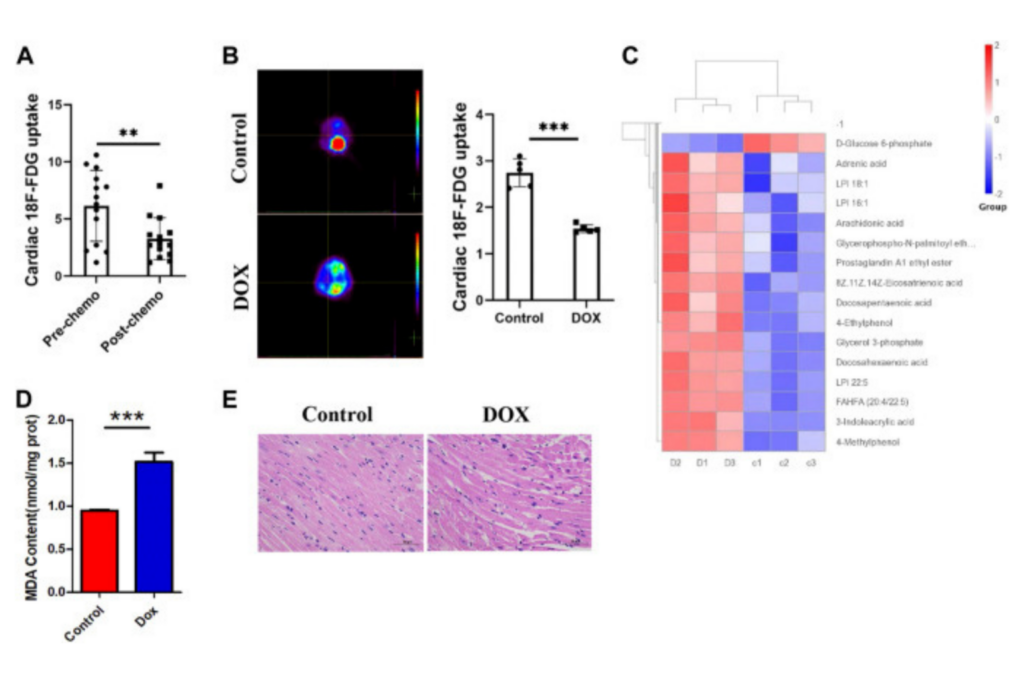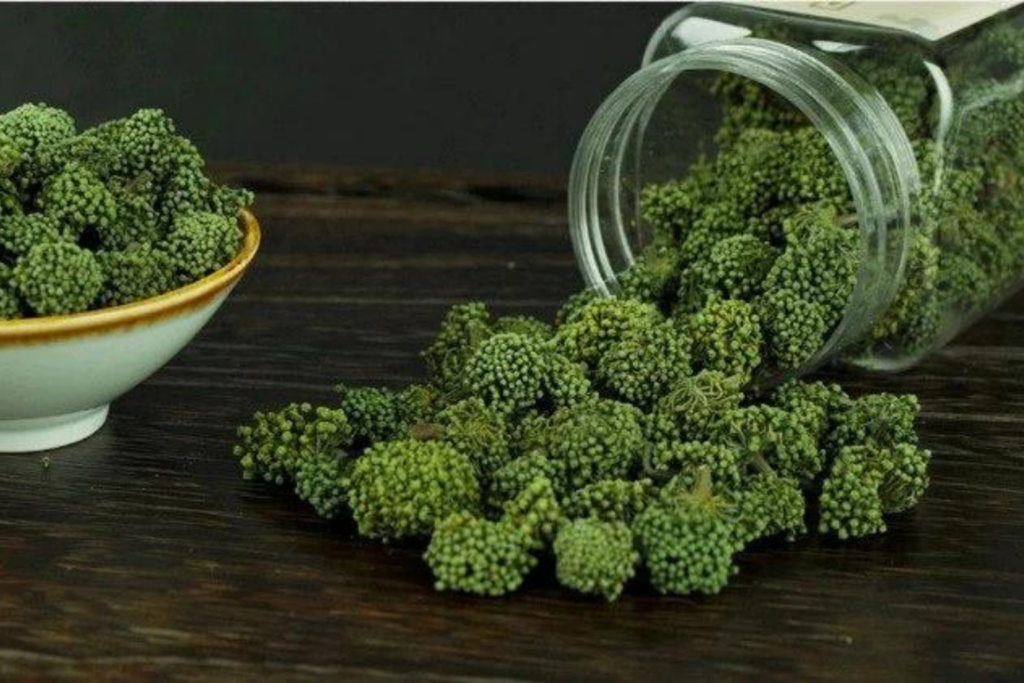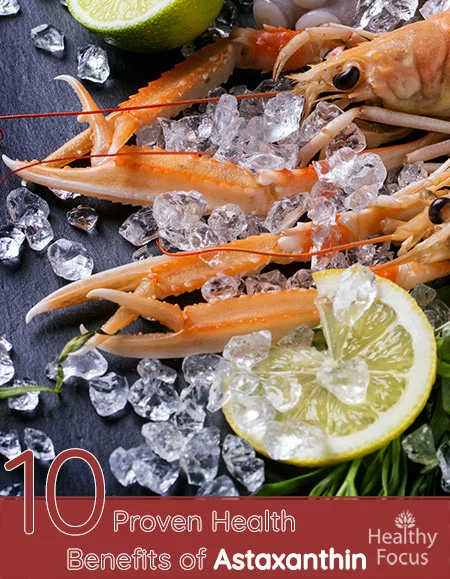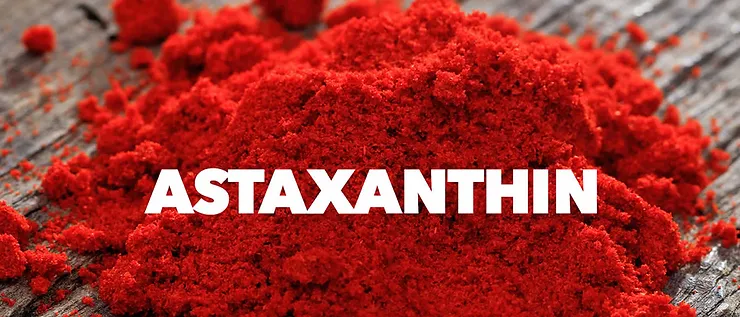Abstract
Objective:
To optimize the conditions for extraction of quercitrin and total flavonoids (TF) from Herba Polygoni Capitati (Touhualiao in Chinese) by using response surface methodology (RSM).
Materials and Methods:
A central composite design (CCD) was adopted to investigate the effects of three independent variables including solvent composition (%), solvent-material ratio (ml/g) and extraction time (min) on the responses, quercitrin and TF yields.
Results:
The optimized conditions of the extraction are as follows: Ethanol concentration, 65.63%; solvent-material ratio, 10.55:1 (ml/g); extraction time, 54.33 min. The established mathematical model described the factors of experimental parameters well and provided a statistically accurate prediction of the optimum yields of quercitrin and TF.
Conclusion:
The experimental values agreed with those predicted by the established mathematical model, thus indicating the suitability of the model employed and the success of RSM in optimizing the extraction conditions.
INTRODUCTION
Herba Polygoni Capitati, the aerial part or whole plant of Polygonum capitatum Buch.-Ham. ex D. Don, has been used as one of the Traditional Chinese Medicines (TCMs) for a long time in China, especially in some ethnic minority regions. The active chemical constituents of Herba Polygoni Capitati were identified as flavonoids, phenolic acids and tannins,[1,2,3] in which flavonoids were considered as the major bioactive compounds. Pharmacological and clinical studies indicated quercetin and its glucosides were bioactive compounds possessing anti-carinogenic,[4,5] anti-oxidative[6,7] and enzyme-modulating activities.[8,9,10] Epidemiological studies also show an inverse relationship between high intake of flavonoids (mainly quercetin) and cardiovascular disease.[11]
Extracts of TCMs have been used in traditional cures and herbal remedies for centuries throughout the world[12,13] and a great deal of valuable experiences have been accumulated in this therapeutic system. Ephedrine, an amphetamine-like stimulant used as decongestant for asthma medication, was extracted and isolated from the Chinese medicinal herb Ephedrae herba.[14] The extract of Ginkgo biloba, especially the standardized EGb 761 was one of the most widely used herbal remedies for dementia and cognitive impairment.[15] Since, many factors such as solvent composition, extraction time, extraction temperature, solvent-material ratio may significantly influence the extraction efficacy, extraction parameters need to be optimized to get more ingredients of prophylactic or therapeutic value in human subjects.[16]
Of all the compounds presented in Herba Polygoni Capitati, the phenolic acids and flavonoid components had received most attention and were considered to be of importance for their pharmacological effects.[17] The extraction of Gallic acid (GA) or TF from Herba Polygoni Capitati in one-factor-at-a-time approach alone,[18] or associated with orthogonal design,[19] has been reported previously. The one-factor-at-a-time approach, in which only one factor is variable at a time while keeping all other factors constant,[20] is time consuming and might cause misleading conclusions as it does not include interactive effects among factors. Orthogonal design is useful in test design[21] but it does not offer prediction from the model equation. Response surface methodology (RSM), a collection of statistical and mathematical techniques, can overcome these drawbacks, since it accounts for possible interaction effects between variables.[22,23] The response surface plot and contour plot of the response as a function of the independent parameters can be obtained by RSM.[24] In the present study, the RSM approach was applied to optimize the extraction conditions (solvent proportion, solvent-material ratio, time of extraction, etc.) from Herba Polygoni Capitati in order to maximize the yields of quercitrin and TF simultaneously.
MATERIALS AND METHODS
Materials and chemicals
Herba Polygoni Capitati, botanically identified by professor Deyuan Chen, was obtained from Guizhou Warmen Pharmaceutical Corporation, Guizhou, China. The whole plant of Herba Polygoni Capitati was dried in a universal oven with forced convection (101-2AB Taijin, China) at 50°C for 4 h. The dried sample was ground in a rotary mill (DFY-200 Wenling, China) and the powder was sieved. Particles with sizes between 10 and 40 mesh (0.3~2mm, i.d.) were collected for the study. The reference compounds quercitrin (111538-200403) and rutin (080-9303) were purchased from the National Institute for the Control of Biological and Pharmaceutical Products of China (Beijing, China). Acetonitrile and methanol were HPLC grade (Tedia, USA). Water was Robust drinking pure water (Le Bai Shi Food and Beverage Ltd., Guangdong). Formic acid was MS grade (Roe Scientific Inc, USA). All other chemicals and solvents were of analytical grade and commercially available.
Sample preparation
Herba Polygoni Capitati powder of 2g was accurately weighed and extracted under certain conditions, thereafter the extract was centrifuged at 3500 rpm for 10 min. The supernatant was collected and filtered through filter paper for subsequent analysis.
Apparatus
The analytical systems used in this study were as follows: The UV-Vis spectra were recorded on a double-beam spectrophotometer (Cary 100-Varian) with cells of 1 cm path length. A DIONEX/UltiMate 3000 series UHPLC-DAD system consisting of a vacuum degasser, a quaternary pump, an auto-sampler, a thermo-stated column compartment and a DAD detector (DIONEX, ThermoFisher, Sunnyvale, USA) were used for acquiring chromatograms.
Determination of total flavonoid content
The total flavonoid content (TFC) was determined according to the aluminum colorimetric method described previously[25,26,27,28] with modifications. Briefly, an aliquot (0.5ml) of each plant extract was mixed with 4.3ml of related solvent, followed by adding 0.1ml of 10% aluminum chloride (AlCl3) and 0.1ml of 1M sodium acetate (CH3 COONa). Rutin was used as the reference standard. After incubating at room temperature for 30 min, the reaction mixture was measured at 405nm against a blank. The TFC value of each sample was calculated and expressed as milligrams of rutin equivalents per gram of dried material (DM).
Chromatographic separation
HPLC analyses of the extracts were carried out by using DIONEX/UltiMate 3000 series. The separation was performed on a ZORBAX SB-C18 column (150 mm × 4.6 mm, 5 μm; Agilent, CA, USA) with a flow rate of 1.0ml/min. The mobile phase consisted of a combination of A (acetonitrile) and B (0.2% formic acid in water). The linear gradient was from 5% to 15% A (v/v) at 5 min, to 16% A at 10 min, to 20% A at 20 min and was then held at 20% A to 22 min. Each run was followed by equilibration time of 5 min. The wavelength of the UV detector was set at 260 nm and the temperature of the column oven was maintained at 30°C. Samples were filtered before injection (PTFE syringe filter; 0.45 μm; Hanbon Ltd, China; 013045). The data was collected and analyzed with Chromeleon 7.1 software.
Preparation of standard solutions
Standard stock solutions of rutin and quercitrin were prepared in methanol, at concentrations of 190.8 μg/ml and 106.0 μg/ml, respectively. The standard curve of quercitrin and TF were calibrated by using the linear least squares regression equation derived from the peak area and absorbance, respectively, concentrations of quercitrin and TF in the samples were calculated according to the standard curve.
Selection of appropriate extraction conditions
Before the development of the study by using RSM, a set of preliminary tests were performed to select the relevant independent variables and determine their experimental ranges. The initial step of the preliminary experiment was to select an appropriate method for extraction for Herba Polygoni Capitati. Three different approaches, namely maceration, refluxing and sonication extraction were tested. The second step of the preliminary experiment was to select an appropriate extraction solvent for Herba Polygoni Capitati. Using a series of extraction solvents varying in range of 0-100% (ethanol or methanol in water), the best solvent was determined. Thirdly, the factor of the solvent-material ratio (6:1, 8:1, 10:1, 12:1, 14:1; v/m) on extraction was investigated by using ethanol: water (70:30, v/v) as the solvent on the condition of sonication extraction for 30 min at room temperature. Fourthly, a proper particle size was selected for further investigation. Finally, duration of extraction (10 min, 20 min, 30 min, 40 min, 50 min, 60 min) was also tested.
Based on these results, three levels (lower, middle, upper) of each relevant variable were selected for central composite design (CCD) to analyze the response pattern and to establish a model.
Statistical analysis
The experimental data obtained from CCD procedures were analyzed by using RSM to fit the following second-order polynomial model (Eq. (1) and regression coefficients obtained.

Where X1, X2,…, Xk are the encoded independent variables affecting the response Y; β0, βi (i = 1, 2,…, k), βii (i = 1, 2,…, k) and βij (i = 1, 2,…, k) are the regression coefficients for intercept, linear, quadratic, and interaction terms, respectively; k is the number of variables.
The Design Expert version 8.0.5b (STAT-EASE Inc.) software was used for regression and graphical analysis of the experimental data. The quality of the model’s fitness was evaluated using the coefficients of determination (R2) and analysis of variance (ANOVA). Response surfaces and contour plots were developed using the fitted quadratic polynomial equation.
RESULTS AND DISCUSSIONS
System precision, linearity of HPLC or UV-Vis
Quercitrin and TF were designated as the markers for evaluation of extraction efficiency. HPLC profiles of the reference standard and Herba Polygoni Capitati extract were shown in Figure 1. The calibration curve of peak area against level of quercitrin was y = 47.622 x − 0.2231 with linear range from 0.033-1.06 μg (R2 = 1.0000, y = peak area and x = quercitrin amount). The calibration curve of absorbance against the amount of TF was y = 0.0029 x – 0.0088 with linear range from 74.32-267.12 μg (R2 = 0.9996, y = absorbance and x = TF amount).

HPLC chromatograms of the authenticated reference compound of quercitrin (a) and the extract of Herba Polygoni Capitati (b) at 260nm
Determination of parameters and the selection of the levels
Effect of the extraction methods
Three different methods of extraction, including maceration, refluxing and sonication extraction were tested with the following parameter values: particle size, 10 mesh; solvent-material ratio, 10:1 (ml/g); duration of extraction, 30 min for refluxing and sonication extraction, 12h for maceration extraction; solvent composition, 70% aqueous ethanol; temperature, room temperature. The amount of quercitrin and TF extracted per gram of DM was presented in Figure 2. ANOVA for the experimental results showed significant differences among these three extraction methods (P < 0.01). Meanwhile, the sonication extraction method gave the highest yields of quercitrin and TF, so it was selected as our extraction method.

Effect of different methods of extraction of quercitrin (left) and TF (right) from Herba Polygoni Capitati
Effect of extraction solvents
The solvent is a key factor affecting the recovery of analytes. In the present study, water, different concentrations of methanol and different concentrations of ethanol were tested. As shown in Figure 3, the extraction efficiency of 60% aqueous ethanol was the highest. Therefore, 50%, 60% and 70% ethanol were selected as the lower, middle and upper levels of the solvent composition for further RSM investigation.

Influence of solvent composition on ultrasound-assisted extraction of quercitrin and TF from Herba Polygoni Capitati
Solvent-material ratios
The impact of solvent-material ratios on the extraction was tested with five values (6:1, 8:1, 10:1, 12:1, 14:1; v/m). A suitable solvent-material ratio value would be selected based on the rules[29] that the value should neither be too small (the bioactive compounds cannot be completely extracted up) nor too high (the processing cost would be unbearable). As presented in Figure 4, an increasing trend of the quercitrin and TF yields was observed, reaching the highest values when the ratio was about 10:1. A probable explanation was that an increase in solvent-material ratio may augment diffusivity of the solvent into the cells and enhance desorption of the phenolic compounds from the cells.[30] In the present study, a slight decrease in quercitrin and TF yields were observed when the ratio value was higher than 10:1, which might be due to a bigger loss in product collection or process operation. Therefore, the solvent-material ratio was set at 10:1 as the middle level for RSM in subsequent study.

Effect of solvent-material ratio on yield of quercitrin and TF
Effect of particle size
Particle size is another important variable to be considered. Generally, extraction efficiency increases with the decrease of particle size [Figure 5]. In the present study, particle size was set at 0.45-0.9 mm in diameter.

Effect of particle size on yield of quercitrin and TF
Effect of extraction time
Selection of an appropriate extraction time was the final step in our preliminary study. Different lengths of extraction at 10, 20, 30, 40, 50 and 60 min were tested to examine the optimal value. The results showed that the yields of quercitrin and TF increased with the prolongation of extraction time from 10 to 50 min [Figure 6]. At the level of 50 min, the quercitrin and TF yields reached the highest amount. Hence, 40, 50 and 60 min were selected as the lower, middle and upper levels of extraction time.

Effect of extraction time on yield of quercitrin and TF
Optimization of extraction parameters by RSM
Multiple linear regression results and analysis of the adequacy of the fitted model
A three-factor and three-level rotatable CCD consisting of 20 experimental runs was employed with 6 replicates at the center point. The effects of unexplained variability were minimized by randomizing the order of experiments. The independent variables were the solvent composition (X1, %, v/v, ethanol/water), the solvent-material ratio (X2, ml/g) and the extraction time (X3, min) with quercitrin and TF yields as indicators. A fixed particle size (0.45-0.9 mm) was chosen. The quercitrin and TF yields of all runs are shown in Table 1. The multiple linear regressions using the second-order polynomial model (Eq. (1)) were performed based on these results.
Table 1
Rotatable central composite design setting in the original and coded forma of the independent variables (X1, X2, X3) and experimental results for the response variables, quercitrin and TF

An ANOVA of independent variables shown in Table 2 indicates that all these three independent variables significantly affect the extraction efficiency (P < 0.05). The regression parameters of the fitted quadratic models with corresponding coefficients of multiple determinations (R2) were shown in Table 3. Good fittings were achieved and the variability of the response was explained by the model. The high R2 values, 0.94 and 0.96 for quercitrin and TF, respectively, imply the experimental data confirm the compatibility with the data predicted by the model. The low value of the coefficient of variation (1.92% for quercitrin, 3.28% for TF) indicates that the results obtained from the fitted model were reliable. The adjusted coefficient of determination (R2 Adj.) value reconstructs the expression with all the *significant terms included and high value of the R2 Adj. (R2 Adj. equals to 87%, 92%, respectively) supports the significance of the model.
Table 2
Analysis of variance for response surface quadratic model

Table 3
Regression coefficients of the predicted second-order model for the response variables, quercitrin and TF

The lack-of-fit testing was used to verify the adequacy of the model’s fitness. ANOVA for the lack-of-fit test was not significant with regard to the quercitrin and TF yields (P > 0.05), indicating that the model could adequately fit the experimental data [Table 4].
Table 4
Analysis of variance for the lack of fit testing for quercitrin and TF

Analysis of response surfaces
Since; the models show good fittings, the response values are sufficiently explained by the regression equation. The response surface curves were plotted to demonstrate the interactions of the independent variables and to determine the optimal value of each independent variable for the maximum response. The relationship between independent and dependent variables was illustrated in three-dimensional (3D) response surface plots and two-dimensional (2D) contour plots. The 3D response surface and the 2D contour plots were provided as graphical representations of the regression equation [Figures [Figures77 and and8].8]. Each contour curve represented an infinitive number of combinations of two independent variables while keeping the other independent variable at the stationary point. In that way, a 3D response surface can be readily visualized. Figure 7a shows the 3D response surface function developed by the model for solvent composition and solvent-material ratio. The solvent composition demonstrated quadratic effects on the response. The content of quercitrin reaches the highest value when 65% ethanol is used. Similarly, the solvent-material ratio demonstrated quadratic effects on quercitrin at the same time. The results of the effects of solvent composition and solvent-material ratio on TFs are shown in Figure 8a. Solvent composition displayed a quadratic effect on the response yielding maximum between 60% and 70% ethanol. Similarly, when solvent composition was fixed with increase of solvent-material ratio, TF increased gradually and reached the highest value when the solvent-material ratio was about 10:1.

Response surface plots (a, c and e) and contour plots (b, d and f) showing the effect of solvent composition (X1), solventmaterial ratio (X2) and extraction time (X3) on the yield of quercitrin

Response surface plots (a, c and e) and contour plots (b, d and f) showing the effect of solvent composition (X1), solventmaterial ratio (X2) and extraction time (X3) on the yield of TF
The effects of independent variables solvent composition and extraction time on the response values of quercitrin and TF yields are shown in Figures Figures7c,7c, ,7d,7d, ,8c,8c, ,8d,8d, respectively. The interactive relationship between the two independent variables can be easily understood by examining the contour plots generated by keeping the other independent variable, solvent-material ratio, constant at the stationary point [Figures [Figures7d7d and and8d].8d]. An increase in the yields of quercitrin and TF were significantly achieved with the increases of solvent composition and extraction time. However, quercitrin and TF yields no longer increase when the independent variables exceeded certain values. An interaction of solvent composition and extraction time was not statistically significant in affecting the quercitrin yield, but it had significant (P < 0.01) effect on extraction of TF.
Figures Figures7e7e and and8e8e demonstrated the effect of solvent-material ratio and extraction time on the yields of quercitrin and TF. Increases in quercitrin and TF yields were observed with the increases in extraction time and solvent-material ratio, which suggests that extraction yields of quercitrin and TF were proportional to extraction time and solvent-material ratio. The interaction of the two independent variables on extraction of quercitrin and TF from Herba Polygoni Capitati was not statistically significant.
Verification experiments
In order to verify the predictive capacity of the model, the optimum response variables were tested under the optimized conditions derived from ridge analysis of RSM. As a result, the observed values could be satisfactorily achieved within 95% confidence interval of the predicted values from the model [Table 5].
Table 5
Comparison between the predicted value and observed value for the response variables, quercitrin and TF

CONCLUSIONS
By using one-factor-at-a-time approach coupled with CCD, ultrasound-assisted extraction parameters, including solvent composition, solvent-material ratio and extraction time were optimized for the extraction of quercitrin and TF from Herba Polygoni Capitati. The results showed that the second-order polynomial model gave a satisfactory description of the extraction data. The optimized conditions are as follows: Extraction method, sonication extraction; solvent, it might be good to round at 65% aqueous ethanol; particle size, 0.45-0.9 mm; solvent-material ratio, round to 10:1; extraction time, round to 54 min. This study can provide fundament information and valuable insight into the industrial extraction processes of Herba Polygoni Capitati.
ACKNOWLEDGMENTS
The authors gratefully acknowledge Guizhou Warmen Pharmaceutical Corporation for providing raw materials and the financial supports from Major Science and Technology Special Program of Guizhou Province (No. 2011 6019-02), Guizhou Provincial Program of Science and Technology Innovation Talent Team on Pharmaceutical Analysis (No. 2011 4008), Guizhou Provincial Special Program on Research and Development of Scientific and Technological Industry about Modernization of TCMs (No. ZY 2011 3013), the Characteristic Key Laboratory of Standardization on Traditional Chinese Medicines and National Medicines and the Characteristic Key Laboratory of Guizhou Province Education Department. (No. KY 2012 005).
Footnotes
Source of Support: Nil
Conflict of Interest: None declared.






